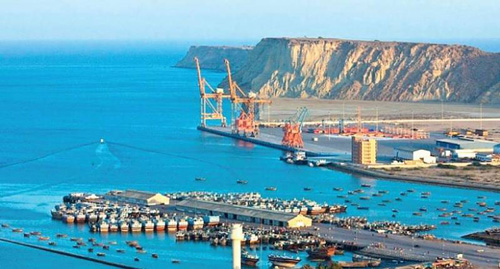Mir Meharullah Mengal
THE geographical location of Baluchistan posits its geo-strategic strength. Its proximity to the Middle East, South Asia, Central Asia and China offers much to its advantages. Strait of Hormuz, which is among the most significant “Sea Lanes of Communication”, passing 40% of world’s oil trade, lies at its arm’s length. Its 700 km long coastline bestowed with warm waters offers year-round navigation. Similarly, from the geo-economic perspective, Baluchistan is home to immense natural resources. It fulfils Pakistan’s 1/3rd natural gas needs. It has abundant untapped oil and mineral resources such as chromite, gold, copper and silver. Unfortunately, the socio-political structure of the province does not illustrate an encouraging outlook. Literacy rate of mere 51.5%, inconsequential rate of urbanization, high unemployment index of 20% and comparatively lowest per capita income indicate the abominable situation.
Nevertheless, recent initiatives undertaken by the Federal Government of Pakistan and spearheaded by China under the aegis of China-Pakistan Economic Corridor (CPEC) are the steps in the right direction. Chinese model of development since the Cultural Revolution has fundamentally centralized on infrastructural development and connectivity. Primarily, this was the very underlying idea which provided the impetus to President Xi Jinping to originate the stupendous ‘One Belt One Road’ initiative in 2013. Whereas, Eastern China remained prosperous owing to numerous economic zones created along the Eastern coast, the far-flung region of Xinjiang lagged in socio-economic progress. Subsequently, it became a hot bed for the insurgents. Through OBOR, China strives to alleviate the discontentment of Uighur. The same mechanism is being replicated in Baluchistan to palliate the afflictions of the residents.
Andrew Small in his book, ‘China-Pakistan Axis’, ascertains CPEC to be the cardinal and decisive pillar of BRI. Irrefutably, CPEC is a monumental step for the well-being of Baluchistan, Pakistan and the whole region. It is aimed at modernization of regional infrastructure and strengthening of economy by the construction of extensive transportation web, energy projects and economic zones.
Once completed, CPEC will offer enormous avenues of opportunities for the people of Baluchistan, job creation and economic uplift to name a few. Upon culmination, with Gwadar acting as the prospective economic hub of Pakistan, the benefits would, subsequently, have trickle down effects to the rest of Baluchistan as well. It will contribute to economic and human development of the inhabitants through alleviation of economic miseries.
CPEC has unveiled the multi-faceted potential of Baluchistan, both in terms of human and natural resources. It is an unprecedented framework to manage these resources. In addition to revitalizing large-scale manufacturing, it provides opportunities to small and medium sized businesses. Perhaps, the province has already begun to reap the fruitions of CPEC in the form of flourishing mining sector, real estate and transportation. It has also reinvigorated the once anaemic civil society into a vibrant institution, thanks to its post-modern and innovative tools. While, previously foreign and domestic investors were reluctant to invest in Baluchistan, owing to uncertain security situation, China’s mass funnelling of finances from both state and private sectors instigated investor interests in the region.
Under the mega-project, several sites are proposed for industrial zones in the province, which include Uthal, Hub, Dera Murad Jamali, Khuzdar, Quetta and Gwadar. Apart from that, a number of mineral processing zones are to be set up in Khuzdar, Chagai (chromite), Qila Saifullah (antimony), Reko Diq (gold), Saindak (gold, silver), Lasbela (manganese), Qalat (iron ore) Gwadar (oil refinery) and Muslim Bagh (chromite). These projects once successfully completed, will unquestionably, be game changer for the locals.
Strategically, CPEC would have far-reaching implications for the security of Baluchistan, chiefly due to foreign vulnerabilities. On the one hand, it has magnified the security concerns by inviting the ire of regional competing states, not necessarily foe, which view Gwadar port as efficacious challenge. Reportedly, intelligence agencies of 23 countries are operating within the 13 km long strip of Gwadar. Indian operatives have stepped up their activities in Balochistan in the wake of CPEC at operational and strategic levels. Their presence is nominally to be covert, but a banal phenomenon. Kulbhushan Jadhav is a practical example in this regard. Baloch insurgents under the banner of BRA, BLA and relatively nascent BRAS, all seek Indian logistic, ammunition and financial assistance. Therefore, to maintain that hybrid warfare is in full swing in the province would not be an overstatement.
Nonetheless, on the other hand, CPEC has the potential to surmount these strategic challenges and overhaul the security situation of Baluchistan. With the elimination of the sense of alienation, effective confidence-building measures and subsequent national narrative building strategy put forth by CPEC, hybrid warfare of the opponents is deemed to be futile. Baloch insurgents have indeed begun to surrender and coalesce into the national polity in masses. Furthermore, the mega project is fully capable of assuaging the miseries of the locals, hence, eradicating security.
Narration
Once completed, CPEC will offer enormous avenues of opportunities for the people of Baluchistan with Gwadar acting as the prospective economic hub of Pakistan, the benefits would, subsequently, have trickle down effects to the rest of Baluchistan as well.










